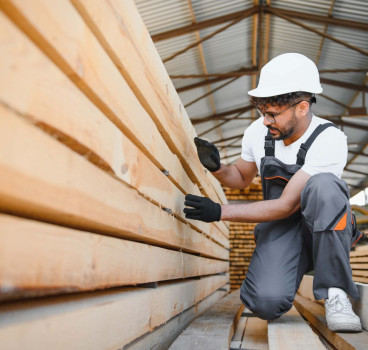Has Lead got a future in construction?
Lead, a malleable, heavy metal with a long and complex history, has been a mainstay in construction for centuries. From Roman water pipes to intricate stained glass windows, its properties offered builders strength, versatility, and weather resistance. Yet, its toxicity casts a dark shadow over its usefulness, raising concerns about health risks and environmental impact writes John Ridgeway.
The global lead market was estimated to be worth USD 21.39 billion in 2022, projected to reach USD 30.78 billion by 2030 at a compound annual growth rate (CAGR) of 5.8%. While seemingly stable, the growth is primarily driven by battery production and electronics, not construction. Lead use in construction faces declining demand due to health concerns and regulations.
Lead boasts a high recyclability rate of over 90%, making it a relatively resource-efficient material. Recycled lead can be used in various applications, including batteries, ammunition, and building materials such as roofing membranes and lead sheathing for electrical cables. This closed-loop system reduces both environmental impact and reliance on virgin lead extraction.
In spite of this, the future of lead in construction appears somewhat uncertain. In developed nations, stringent regulations and the availability of safer alternatives like copper, aluminium, and plastics are contributing to a decline in lead use for roofing, flashings, and plumbing.
Lead still retains its relevance in specialised areas such as acid-resistant linings, radiation shielding, and soundproofing due to its unique properties. However, demand in these areas is limited. Developing countries may still use lead in construction due to lower costs and limited availability of alternatives. However, stricter regulations are expected to gradually phase out its use in these regions as well.
Overall, the lead market in construction is likely to shrink globally while remaining relevant in specific niche applications. While its high recyclability offers an environmental advantage, health concerns and the rise of sustainable alternatives will continue to challenge its position in the building industry.
For millennia, lead's unique characteristics – low melting point, ease of workability, and resistance to corrosion – made it a valuable construction material. It found its way into roofs, flashings, pipes, electrical conduits, and even paints, leaving an indelible mark on architectural landscapes worldwide.
However, the 20th century brought a stark realisation – lead's toxicity. Chronic exposure poses serious health risks, affecting the nervous system, kidneys, and blood. The discovery of lead-based paint hazards in homes and the dangers of lead smelting sparked stricter regulations and a gradual shift towards safer alternatives.
Despite mounting concerns, lead still holds its ground in select construction applications. Its high density makes it ideal for soundproofing and radiation shielding, while its weight adds stability to counterweights and roofing membranes. Furthermore, its ability to bond with other materials and resist extreme temperatures ensures its continued use in specialised applications such as acid-resistant linings in chemical and industrial settings.
In hospitals and laboratories, lead bricks or sheets continue to be used to block harmful radiation exposure. Lead shielding also protects workers and equipment from radiation in critical areas of nuclear facilities. In the electrical sector, lead sheathing protects cables from corrosion and ensures their safe operation.
While lead retains its niche applications, several alternatives are gaining traction due to safety and environmental concerns. These particularly include copper and aluminium, which are replacing lead in roofs, flashings, and gutters. These materials offer similar durability and weather resistance without the toxicity.
Thermoplastics and elastomers are providing flexible, watertight options for gaskets, seals, and insulation, often at a lower cost than lead. For soundproofing and weight, materials like concrete, sand, and natural stone also offer sustainable and readily available alternatives.
Lead however, still offers several advantages over other materials. It offers exceptional resistance to corrosion and weather extremes, ensuring long-lasting performance. Its malleability allows for easy shaping and customisation, making it suitable for intricate applications. Lead's high density also effectively blocks sound and radiation, making it invaluable in specialised scenarios.
Lead's disadvantages are its toxicity and health risks. Lead exposure poses serious health risks, particularly for children and pregnant women. Lead mining and production contribute to air and water pollution, with long-lasting ecological consequences. The product is also faced with increasingly stringent regulations and bans on lead use in certain applications limit its market reach.
The story of lead in construction is one of both innovation and caution. While its history is steeped in architectural marvels, its toxicity casts a long shadow. Emerging alternatives and stricter regulations are pushing the industry towards safer and more sustainable solutions. Ultimately, the future of lead in construction hinges on finding a balance between its unique properties and the undeniable risks it poses.
Whether lead will continue to hold its niche or fade into the annals of history remains to be seen. The answer may lie in our ingenuity, our commitment to health and the environment, and our ability to develop truly sustainable alternatives for the builders of tomorrow.
Additional Blogs

What if Building Control went fully digital?
Building control governs structural integrity, fire protection, energy efficiency, accessibility and countless other aspects of design and construction. Historically, this process has been highly...
Read moreWhere most “Smart Buildings” go wrong
Smart buildings are often presented as the ultimate in modern construction - interconnected, efficient, intuitive and driven by real-time data. They promise lower operating costs, reduced energy use,...
Read more

The future of facilities management starts at RIBA Stage 0
Facilities management has traditionally been treated as a discipline that only becomes relevant once a building is handed over. At that point, FM professionals inherit decisions made months or years...
Read more